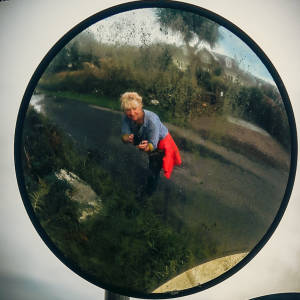An sean teach*
A bright and cold day we ventured out for a small walk down to Gortnakilly and were amazed to find it relatively calm for normally it is wild down here.
It's an interesting area - a small piece of land facing out into the Bay but once busy and populated. A cluster of 8 houses, now mainly ruined, lie above this lone house and are typical of the little groups you find on the peninsula. Known as clacháns people tended to lived communally and sustainably. Each house had its own kitchen garden and maybe an animal such as a pig or cow, but there would also have been fields and commonage that were worked and used by everyone.The clachán would also have had the right to collect seaweed and to gather turf.
A quick browse through the 1911 census shows that 6 out of the 8 buildings were inhabited and they were mainly classified as 2nd class houses, only one being 3rd class. The houses had stone walls and slate rooves. There were a variety of outbuildings on site including stables, cow houses, calf houses, dairies, piggeries, fowl houses and a turf house There were 32 people living here. One house had 11 inhabitants including young children, aged parents and two servants. Most were extended families with several elderly amongst them. All were Catholics and the older members spoke English and Irish. Most were farmers,
This building is out on its own though, facing directly into the Bay and all the ferocious weather. It is surrounded by a what was once a garden and inside has two small rooms complete with stone fireplaces. I don't think it features on the census and it doesn't appear until the 1940 maps so it may have built anytime at the beginning of the 20th century.
I can get very easily distracted as you can see!
* And a mad practice at my Irish as the next lesson is on wednesday - aargh, I've forgotten everything.

Comments
Sign in or get an account to comment.


